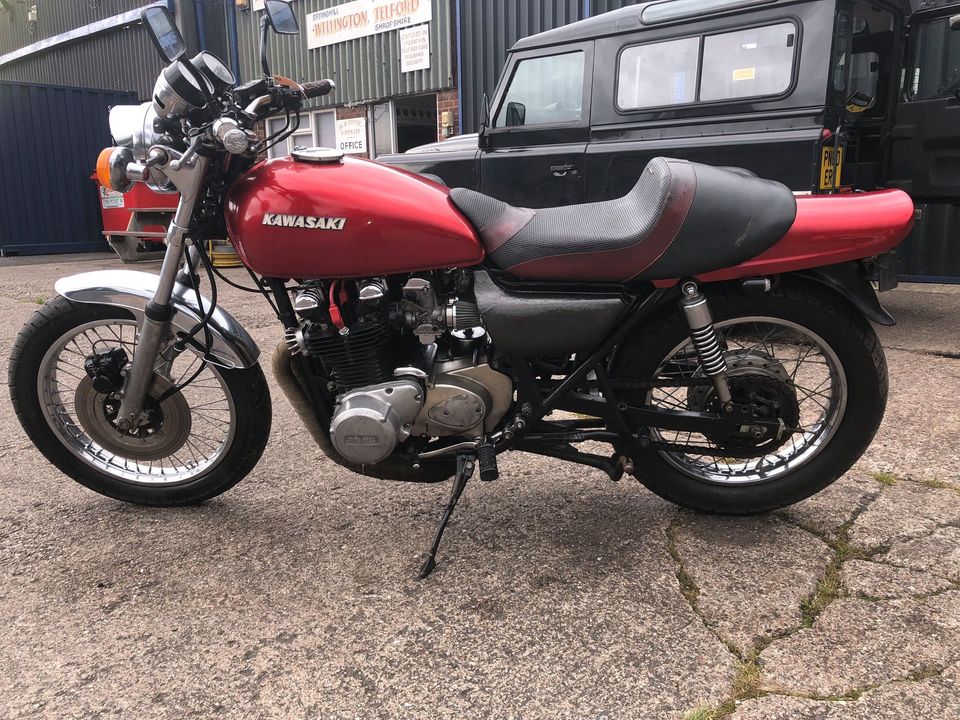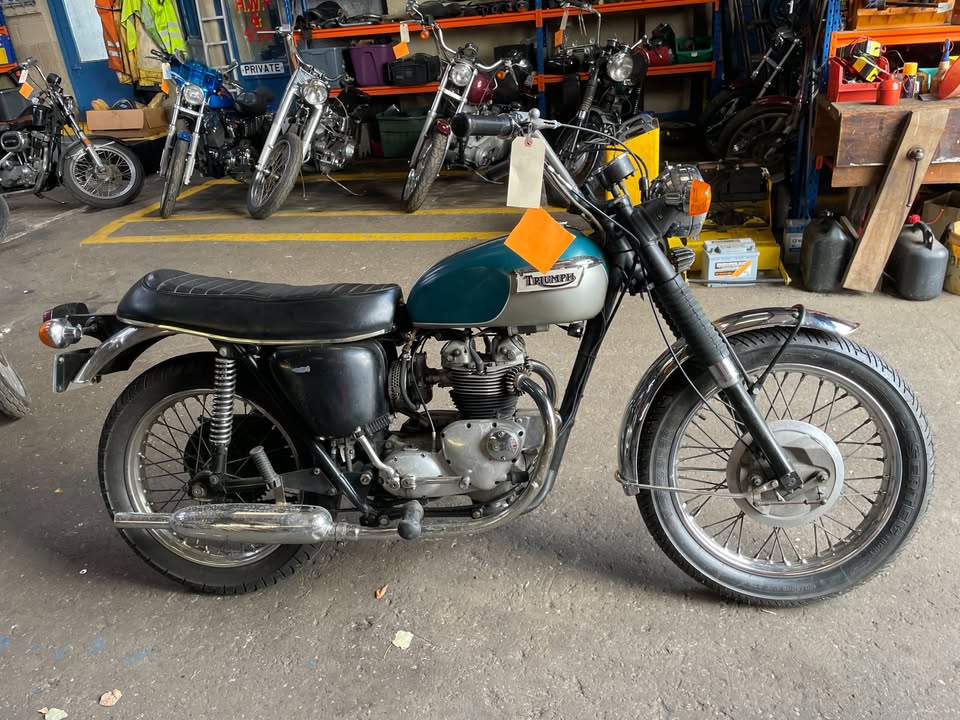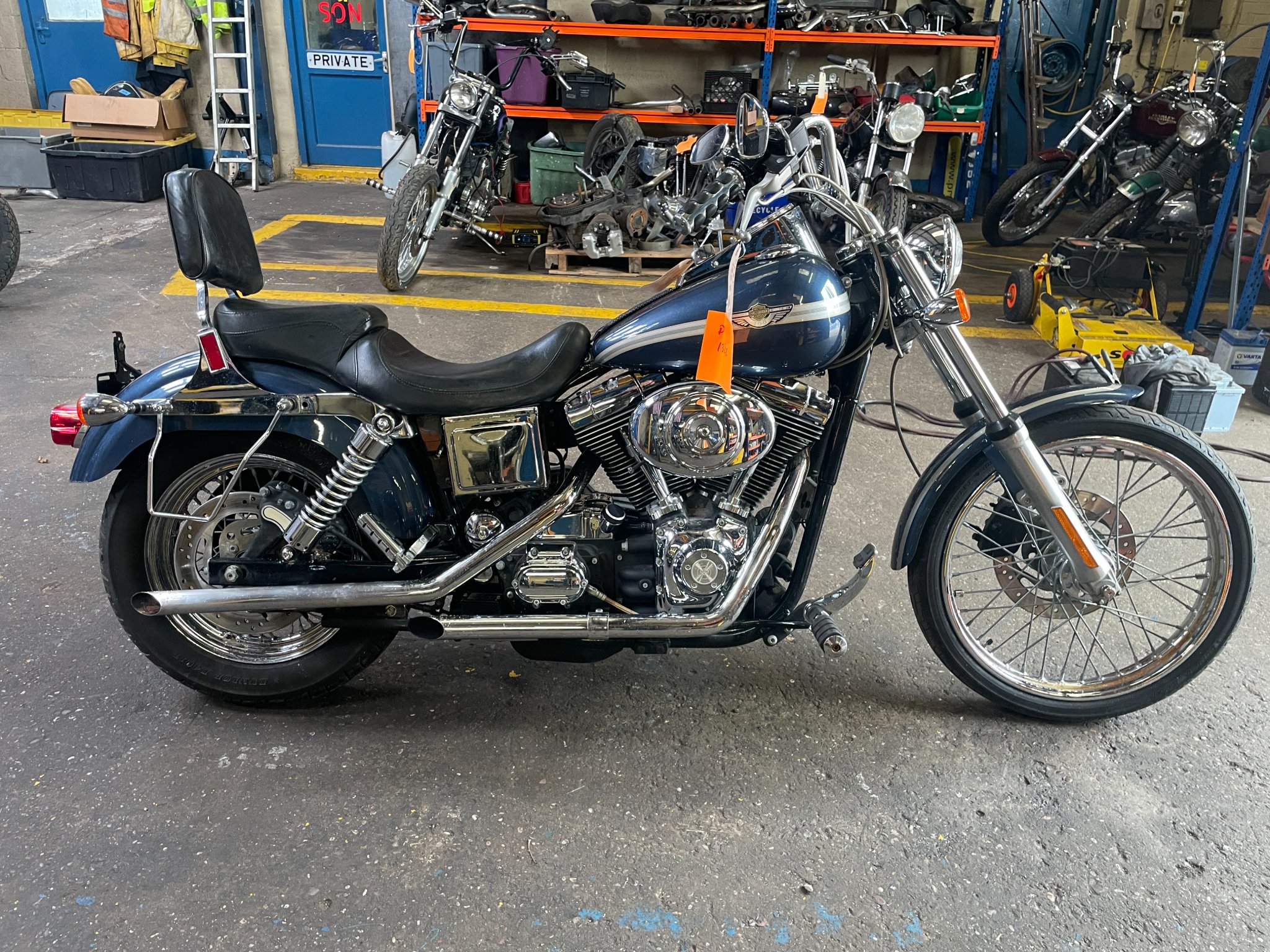Classic and Classy Motorcycles Ltd
Vintage and Classic Motorcycle Importers
1976 Kawasaki KZ 900 A4 bike with 1974 Z1A Engine

The 1976 Kawasaki KZ900 A4: Blending Tradition with Performance
In the annals of motorcycle history, the 1976 Kawasaki KZ900 A4 holds a special place. Known for its blend of raw power and refined engineering, this model became a beacon of Kawasaki's commitment to excellence. Even more intriguing is the adoption of the 1974 Z1A engine into its chassis, a move that bridged two eras of Kawasaki's storied legacy in motorcycle production. Here, we delve into the specifics that made this combination a standout in the motorcycle world.
- Engine displacement: 903cc - A robust heart derived from the 1974 Z1A, known for its reliability and power.
- Compression ratio: 8.5:1 - Offering a balance between performance and fuel efficiency.
- Carburetion: Four Mikuni VM28SC - Providing precise fuel mixture for optimal performance.
- Ignition system: Battery and coil, a testament to the era's technology.
- Cooling system: Air-cooled, maintaining simplicity and reliability.
- Final drive: Chain, for direct and efficient power transmission.
- Fuel capacity: 17 liters, ensuring long rides without frequent stops.
- Wheelbase: 1,490 mm - A stable and comfortable ride.
- Ground clearance: 135 mm, suitable for various riding conditions.
- Seat height: Offering accessibility to riders of different statures.
- Horsepower: Approximately 82 hp, a testament to its spirited performance.
- Torque: 54.2 lb-ft, providing ample pull and exhilarating acceleration.
- Transmission type: 5-speed, for versatile riding across scenarios.
- Frame type: Tubular steel, offering durability and strength.
- Suspension system: Advanced for its time, ensuring a smooth ride.
- Braking system: Disc front and drum rear, for reliable stopping power.
- Dry Weight: 246 kg, a solid build that translates to stability at speed.
- Top speed: Approximately 130 mph, showcasing its competitive spirit.
- Acceleration: 0-60 mph in just seconds, underlining its performance pedigree.
Find Classic Motorcycles
Stay in the loop - Subscribe for Updates
One email notification a month when a new shipment arrives.
 1971-Triumph-500cc-T100c-Tiger-Ref-1561
1971-Triumph-500cc-T100c-Tiger-Ref-1561 2003-Harley-Davidson-Anniversary-Dyna-Wide-Glide-FXDWG-1450cc-Ref-D1322
2003-Harley-Davidson-Anniversary-Dyna-Wide-Glide-FXDWG-1450cc-Ref-D1322